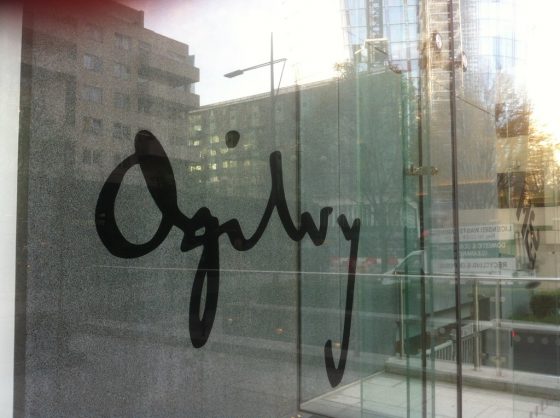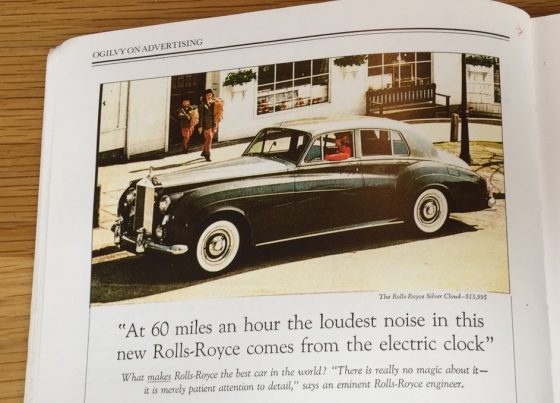
This November, I went back to where I started: Ogilvy & Mather in London. I went to have lunch with an old copywriter friend who is working there. We sat overlooking the Thames in the new Sea Containers building that houses about 1,200 people working in the Ogilvy Group. This group is one of the top ten agency networks and Ogilvy & Mather has about 200 offices worldwide.
I had my first stab at copywriting as a trainee back in 1979 at what was then called Ogilvy, Benson & Mather. Even back then it was a large London agency with hundreds of employees. The first ad I ever wrote and had published was a full-page press ad for the American Express card. Ogilvy has worked with the American Express account in some capacity ever since 1962 and is still one of their agencies.
The loud tick of a clock
David Ogilvy was one of the founders of the original agency in New York back in 1948 that grew to become today’s Ogilvy & Mather empire. He was a copywriter who believed in doing his homework. One of his most famous headlines was for Rolls-Royce and was based on an obscure fact he uncovered in a report: “At 60 miles an hour, the loudest noise in this new Rolls-Royce comes from the electric clock”. This is no less than 17 words showing that you don’t have to keep headlines short if you have something to say.
David Ogilvy gained cult status as a copywriter. In his book “Ogilvy on Advertising”, there is a story about a client who got out his pen to start changing the copy that had been presented. He was told politely by the agency to put the pen away. No client tampered with the words of David Ogilvy like that!
The old sledgehammer approach
David Ogilvy’s book was seen as a kind of bible of advertising and was widely read in the business in the 1970s. It is interesting to note that a new revised edition has just been published even though David Ogilvy passed away in 1999. The book features new material supplied by Ogilvy’s non-executive chairman Miles Young and has been renamed “Ogilvy on Advertising in the Digital Age.”
In an interview published in Huffington Post on November 7, Young says: “Old-fashioned advertising, which is a sledgehammer at its worst, invaded your space and commanded you to buy something. This tactic has disappeared completely in this digital world. Today, the goal is to give the consumers a choice as to whether he or she wants to enter into and engage with the content a brand has designed. Digital has put the ownership on the customer, and that’s a really powerful and significant change because there’s a reversal on the traditional role of advertiser and consumer.”
To put it another way: Before products were sold. Now they are bought.
Two sides of the line
Back when I started there was a clear distinction between “above the line” and “below the line” advertising. This line divided advertising campaigns for the mass market using media such as TV, newspapers, magazines and billboards from advertising that was more targeted such as direct mail, trade shows, point-of-sale or brochures. The glamourous and lucrative side of advertising was above the line and budding copywriters like me aspired to write award-winning print ads, TV commercials and outdoor posters. Most of my contemporaries shunned the more laborious and less public below the line work. It was lower status and lower paid.
Since then, this line has become blurred. Traditional consumer advertising agencies that once concentrated on high profile, above the line work have seen a paradigm shift. More and more attention now goes to social media, websites and content marketing that are difficult to define as either above or below the line.
Threats to traditional advertising
Facebook and Google are seen as a real threat to the audiences and revenues long enjoyed by more established mass media channels which hit wide audiences. We are all having to adapt to a changing media landscape. The dividing line between above and below the line advertising has become less relevant as agencies and advertisers try to grasp what is beyond the line in the digital age.
By Peter Goddard
